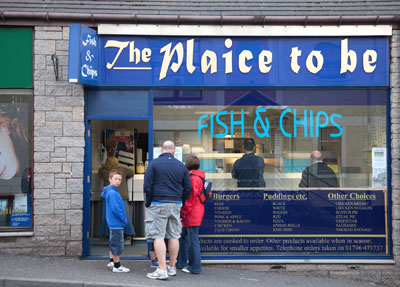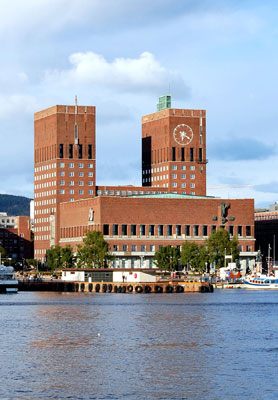Eating on the cheap in expensive cities
This item appears on page 60 of the December 2013 issue.
Oslo recently overtook Tokyo as the most expensive city in the world. That doesn’t surprise me in the least. The last time I was in Oslo, a plain cup of coffee cost $4. Beer, while very good, was $8 a glass.
Whether you’re in an outlandishly expensive country or just want to save money, there are plenty of strategies for stretching your food budget in Europe. Here are some tips.
Ethnic eateries — These places usually offer the cheapest hot meals in town. Almost every night I was in Oslo, I found myself walking down a street called Grønland into the immigrant district for food that was both spicy and affordable. Throughout wealthy Northern Europe, immigrant communities labor at subsistence wages. Rather than eat bland and pricey local food, they (along with savvy residents and travelers) go cheap and spicy at simple diners, delis and take-away stands serving Middle Eastern, Pakistani and Asian food.
Cafeterias — “Self-service” is an international word. You’ll find self-service restaurants in big cities everywhere, offering low-price, low-risk, low-stress, what-you-see-is-what-you-get meals.
A sure value for your euro is a department-store cafeteria. These places are designed for the shopper who has a sharp eye for a good value. At a salad bar, grab a plate and stack it like the locals do — high. Hungry sightseers also appreciate the handy, moderately priced cafeterias found in larger museums.
Institution-affiliated eateries — If your wallet is as empty as your stomach, find a cheap, humble cafeteria that’s associated with (and subsidized by) a local institution, such as a university, city hall, church, hospital, charity, senior center, fire station, union of gondoliers, retired fishermen’s club and so on. (These are sometimes called “mensas.”)
Profits take a back seat to providing good food at a good price, and many of these eateries welcome the public to pull up a chair. Options include a semiswanky City Hall cafeteria in Oslo, student canteens in university towns (such as Salzburg, Austria) and Poland’s dreary-looking but cheap “milk bars.”
Bakeries and sandwich shops — Bakeries are good places to pick up basic sandwiches, tiny pizzas or something equally cheap and fast but with more of a regional flavor (such as savory pasties in England or a croque-monsieur sandwich in France). Chains that sell good, healthful sandwiches, salads and pastries are Britain’s Pret A Manger, Norway’s Deli de Luca and Spain’s Pans & Company. Local deli-like shops are popular in many parts of Europe; try a traiteur in France or a rosticceria in Italy. The business-lunch crowd invariably knows the best places for an affordable fill-the-tank bite.
McEurope — Fast-food restaurants are everywhere. Yes, the hamburgerization of the world is a shame, but face it: some of the busiest and biggest McDonald’s in the world are in Paris, Rome and Moscow. American fast food has gone global.
You’ll find KFC and Subway in every language; it isn’t exciting (and costs more than at home), but at least you know exactly what you’re getting, and it’s fast. They’re also kid-friendly and satisfy the need for a cheap salad bar and a tall orange juice. They’ve grabbed prime bits of real estate in every big European city, providing a cheap seat (with no cover charge) and an opportunity to savor a low-class paper cup of coffee while enjoying high-class people-watching. Many offer free WiFi as well.
Each country has its equivalent of the hamburger stand. (I saw a “McCheaper” in Switzerland.) You might say to yourself, “I didn’t travel all the way to Venice to eat in a McDonald’s,” but consider fast food as comfort food — something fun halfway through your trip.
Street food — Every country has a cheap specialty that’s sold at take-out stands or shops where you can grab a filling bite on the go — French creperies, Greek souvlaki stands, Danish polse (sausage) vendors, Italian pizza rustica take-out shops, Dutch herring carts, British fish-and-chip shops and Turkish-style kebab and falafel kiosks.
Of all these options, the ubiquitous kebab stand is my favorite. The best ones have a busy energy, and a single large kebab wrapped in wonderful pita bread can feed two hungry travelers for $5. Don’t miss ayran, a healthy yogurt drink popular with Turks, which goes well with your kebab. In general, if there’s a long line at a particular stand, you can bet that customers appreciate the value that vendor provides.
One final tip — Don’t let the price of a meal determine your agenda. If you’re dreaming of going to Ireland but the food is cheaper in Portugal, your best value is still Ireland. It’s just essential that you eat smart and travel smart.


